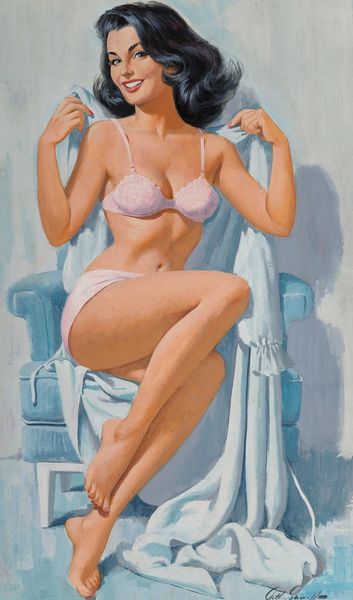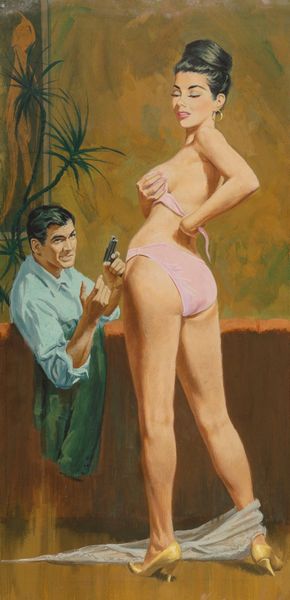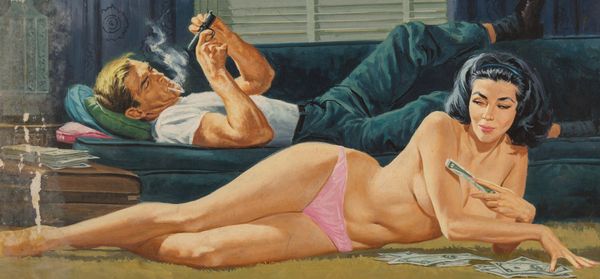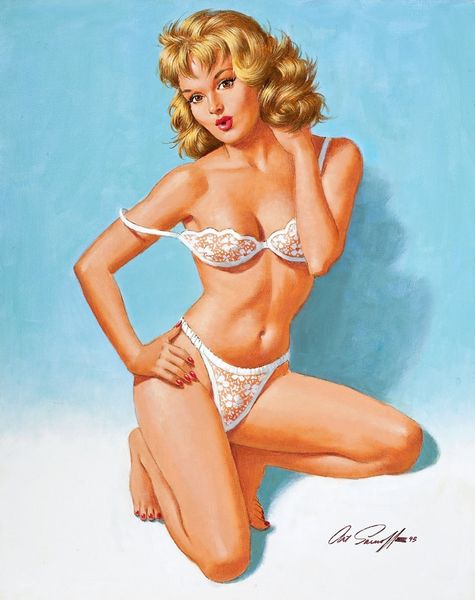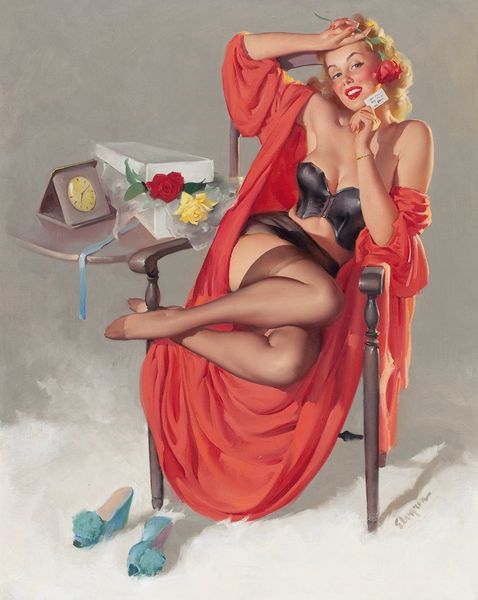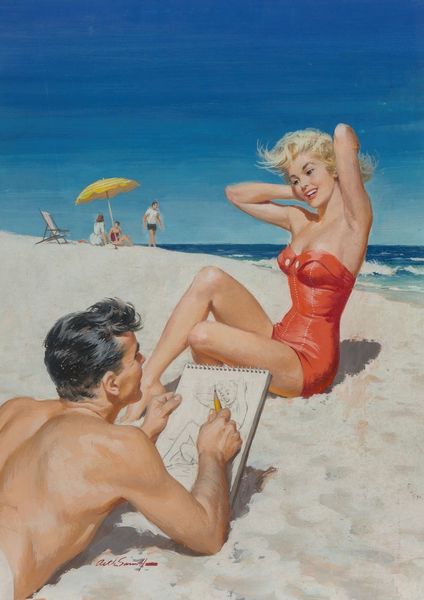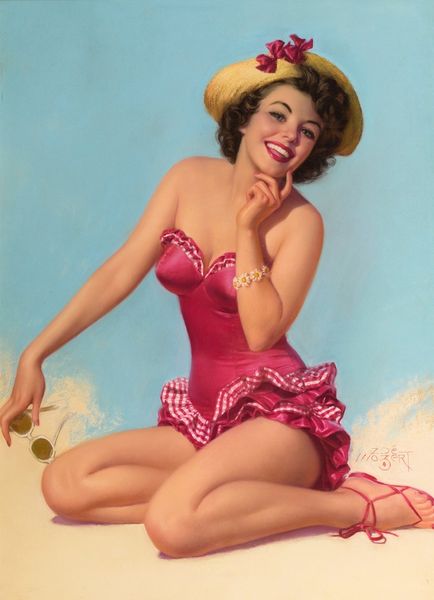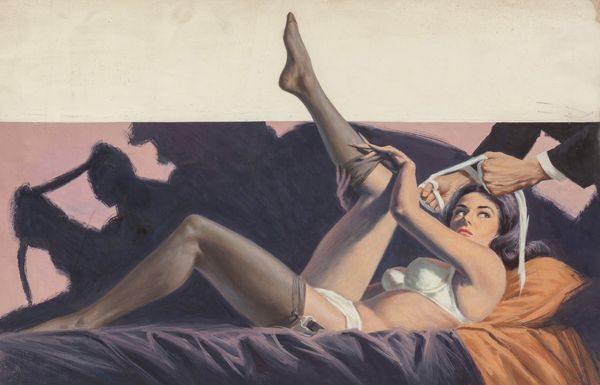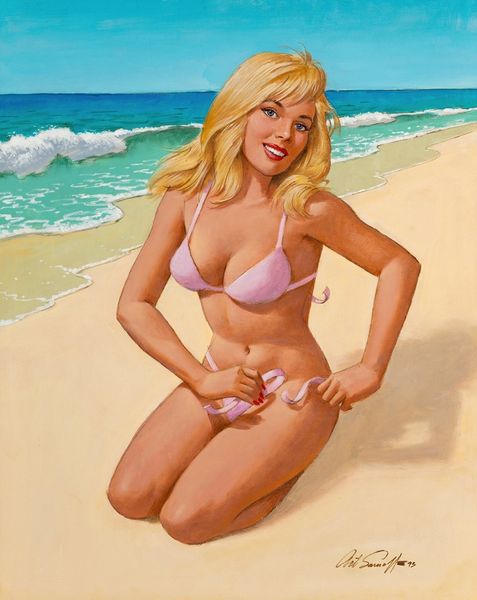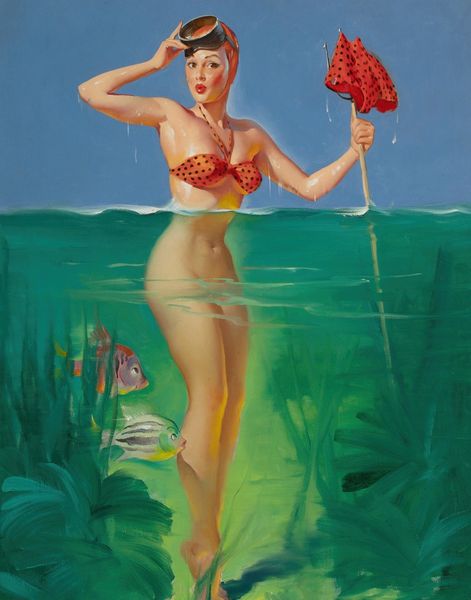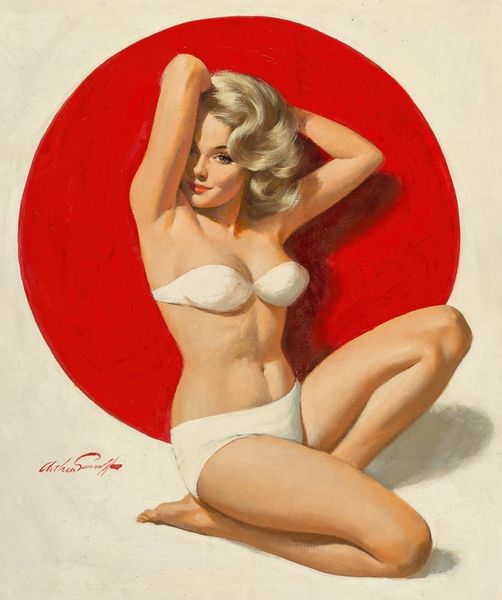
painting, oil-paint
#
portrait
#
painting
#
oil-paint
#
figuration
#
oil painting
#
pop-art
#
genre-painting
#
portrait art
#
erotic-art
Copyright: Modern Artists: Artvee
Editor: We’re looking at the cover of "Man’s Life" magazine from 1966, titled "Hungarian Secret Police," by Victor Prezio. It's an oil painting showing a woman taking money from a jacket while a man drinks in the background. The scene feels charged with intrigue, a sense of hidden narratives just beneath the surface. What can you tell us about this piece in its historical context? Curator: This image offers a fascinating glimpse into the intersection of Cold War anxieties and pulp magazine culture. While ostensibly a simple genre painting, it leverages popular fascination with espionage and "exotic" Eastern European settings. Magazines like "Man’s Life" played a significant role in shaping public perception of geopolitical tensions, often through sensationalized narratives of intrigue. How do you think the image's portrayal of women intersects with these themes? Editor: I see what you mean about "exotic." The woman definitely fits a specific, almost stereotypical, femme fatale image. Curator: Exactly. It's worth considering how this imagery functions within the larger historical context. During the Cold War, images of women were frequently used in propaganda to symbolize ideological battles – often framing the East as morally corrupt. And magazines presented images of masculine prowess in containing communism and being seduced by dangerous Eastern spies. What's your take on the male figure in the background – does he seem like an active participant or more of a passive victim? Editor: He seems resigned, almost like he's complicit but trapped. It adds another layer of moral ambiguity. So, the magazine is shaping a public narrative around Cold War anxieties and the roles of gender? Curator: Precisely. It underscores how popular culture contributed to the construction of public perceptions about the era's complex geopolitical landscape. This wasn't just about spies and secret police, but about societal fears played out on newsstands across America. Editor: I hadn't thought about the way the magazine itself acts as a shaper of public opinion in this situation. Curator: Examining these kinds of illustrations helps to show how even commercial art engages with politics.
Comments
No comments
Be the first to comment and join the conversation on the ultimate creative platform.
